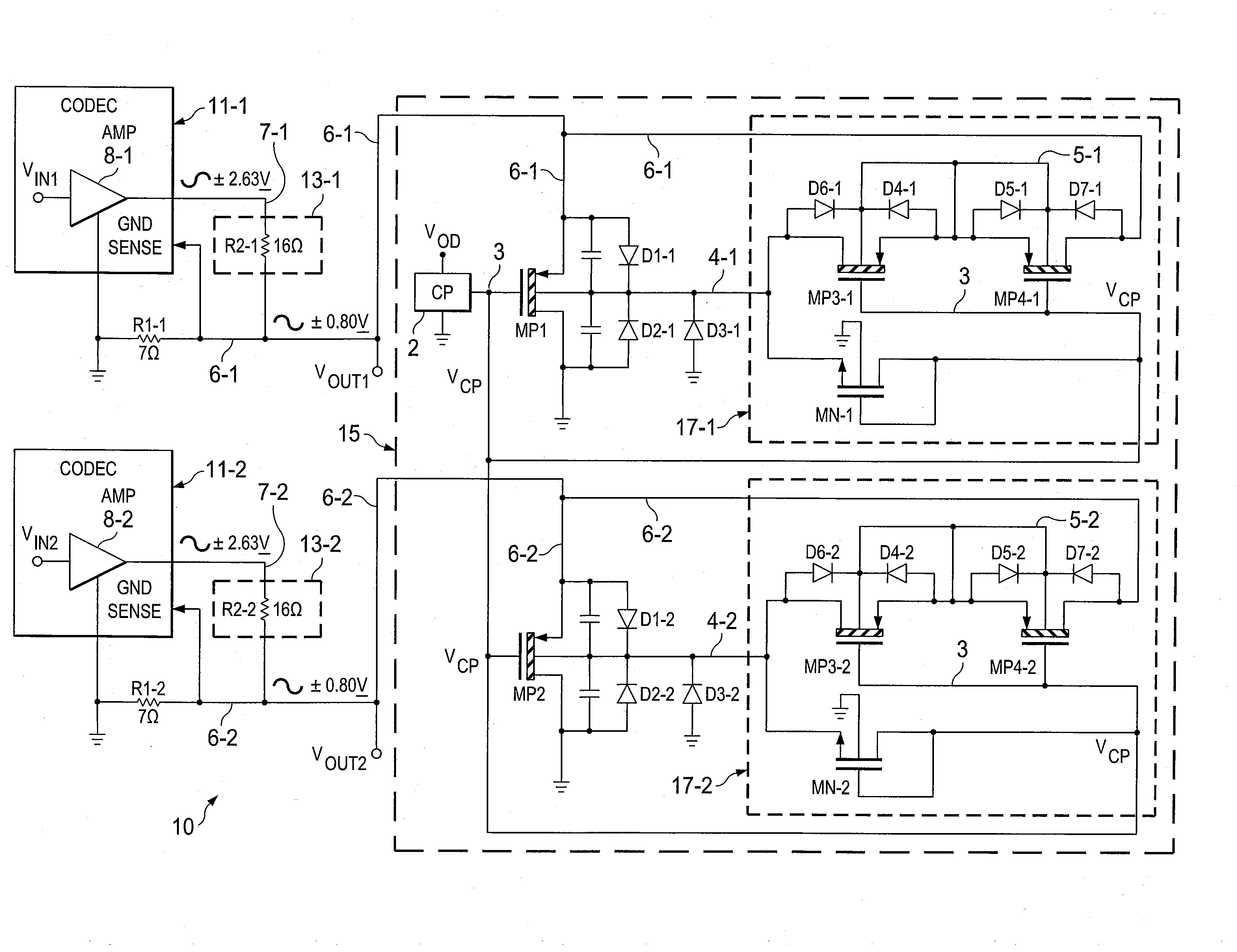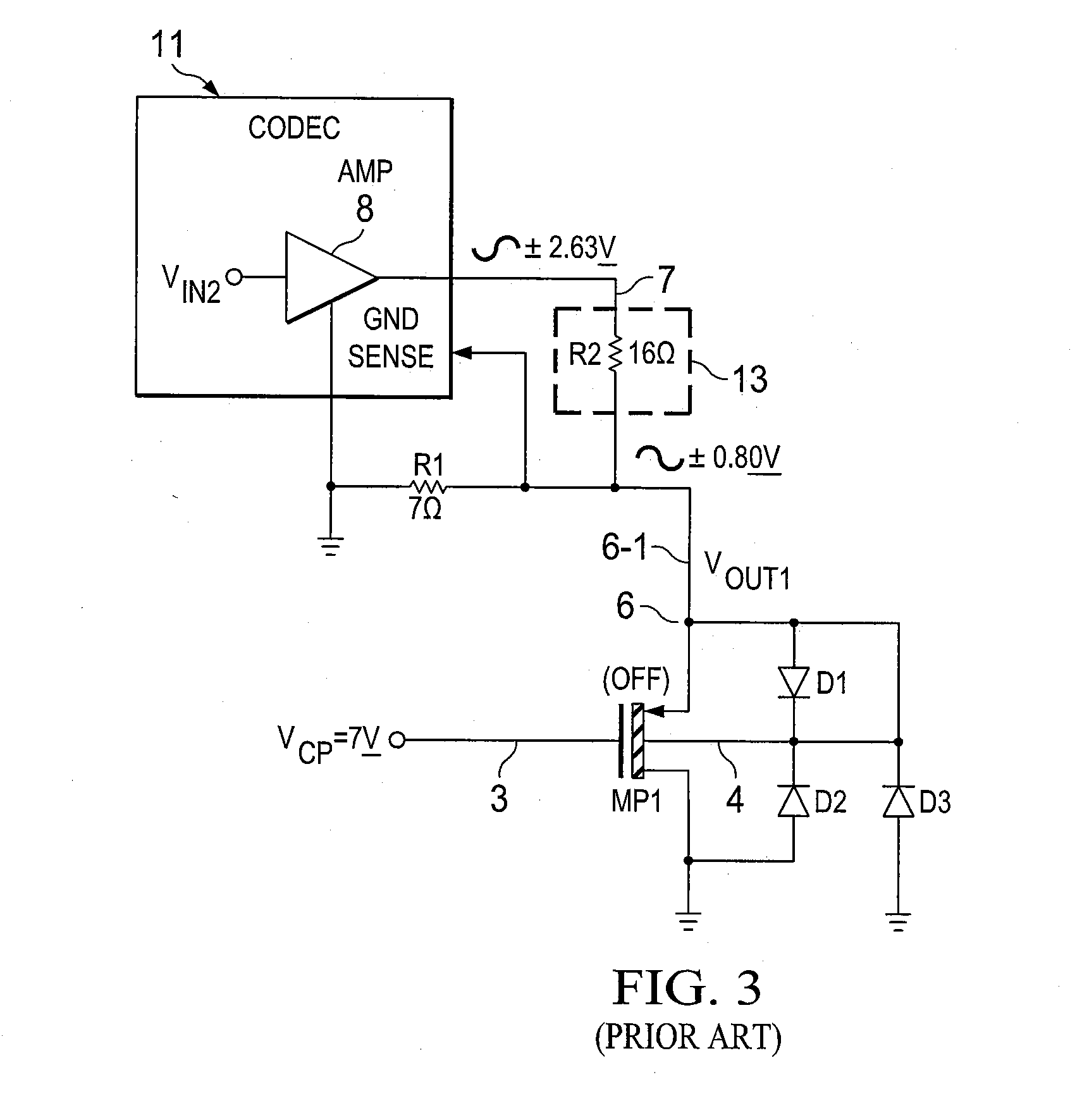Negative Audio Signal Voltage Protection Circuit and Method for Audio Ground Circuits
a technology for protecting circuits and negative audio signals, applied in the direction of circuit arrangements, emergency protective arrangements for limiting excess voltage/current, pulse techniques, etc., can solve problems such as introducing a large amount of distortion into the system, and achieve the effect of preventing distortion of output signals
- Summary
- Abstract
- Description
- Claims
- Application Information
AI Technical Summary
Benefits of technology
Problems solved by technology
Method used
Image
Examples
Embodiment Construction
[0038]FIG. 4 shows an embodiment of a circuit 10 which includes ground switch circuitry 15 that in turn includes first and second audio signal channels and also includes negative voltage protection circuits 17-1 and 17-2. Negative voltage protection circuits 17-1 and 17-2 prevent negative portions of audio signals in the two channels from forward biasing internal parasitic PN junctions (i.e., PN diodes) in depletion mode “ground switch” transistors MP1 and MP2 of ground switch circuitry 15 and thereby prevent distortion of audio signals in the first and second audio signal channels caused by the negative portions of the audio signals.
[0039]The first audio signal channel includes an audio amplifier 8-1 producing an audio output signal on conductor 7-1, and also includes a resistive voltage divider including speaker resistance R2-1 coupled between output 7-1 of amplifier 8-1 and an output conductor 6-1 on which VOUT1 is produced. Audio amplifier 8-1 is included in a conventional CODEC...
PUM
 Login to View More
Login to View More Abstract
Description
Claims
Application Information
 Login to View More
Login to View More - R&D
- Intellectual Property
- Life Sciences
- Materials
- Tech Scout
- Unparalleled Data Quality
- Higher Quality Content
- 60% Fewer Hallucinations
Browse by: Latest US Patents, China's latest patents, Technical Efficacy Thesaurus, Application Domain, Technology Topic, Popular Technical Reports.
© 2025 PatSnap. All rights reserved.Legal|Privacy policy|Modern Slavery Act Transparency Statement|Sitemap|About US| Contact US: help@patsnap.com



